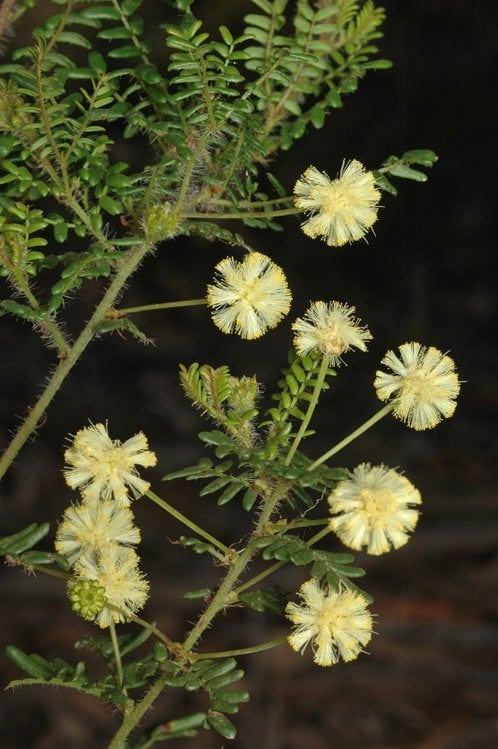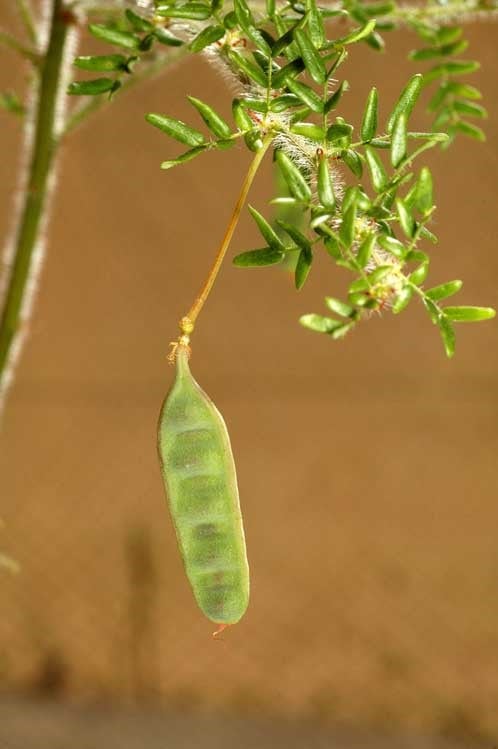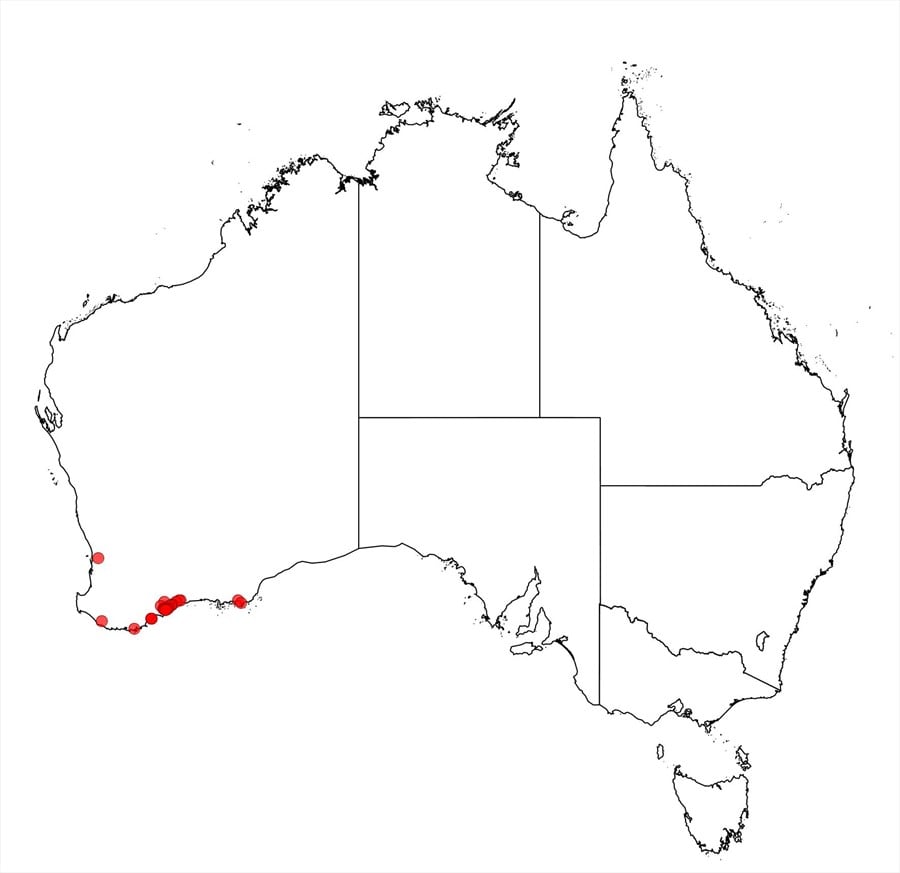Acacia empelioclada Maslin
WATTLE
Acacias of Australia
Family
Fabaceae
Distribution
Near coastal areas, occurring at Cape Riche and Fitzgerald R. Natl Park, south-western W.A.
Description
Shrub 0.5-2 m high. Branchlets ribbed, dark grey to black, pilose. Pinnae 1-3 pairs, 10-30 mm long except 2-12 mm long on proximal pinnae of multijugate leaves; petiole 1-2 (-5) mm long; rachis 4-9 mm long; pinnules 3-10 pairs except 2-4 pairs on proximal pinnae of multijugate leaves, narrowly oblong, 4-10 mm long, 1-3 mm wide, flat or recurved to revolute, green, glabrous; gland on rachis at base of pinnae, sessile, absent from unijugate leaves, with additional glands usually on pinna-rachis at base of uppermost 1-4 pairs of pinnules. Inflorescences simple, 1 or 2 per axil; peduncles 10-20 mm long, glabrous; heads globular, 25-43-flowered, cream to pale yellow. Flowers 5-merous; sepals c. 5/6-united; petals 1‑nerved. Pods 1.5-5 cm long, 6-9 mm wide, pilose to glabrous. Seeds ±transverse, c. 3 mm long.
Habitat
Grows on rocky hills in mallee heath, also in sand or sandy laterite and in clay soil along watercourses in mixed scrub.
Specimens
W.A.: Mt Melville, B.R.Maslin 1062 (AD, K, MEL, NSW, PERTH); Thumb Peak, Fitzgerald R. Natl Park, K.Newbey 3421 (CANB, PERTH).
Notes
A member of the ‘A. browniana group’. Specimens from Cape Riche have multijugate leaves with flat pinnules and sometimes eglandulose pinna-rachae. These plants resemble A. leioderma but are distinguished by their pilose branchlets. Elsewhere the leaves are unijugate or multijugate, the pinnules are recurved (revolute upon drying) and the pinna-rachae are gland-bearing. These plants are distinguished from A. lateriticola by their generally larger leaves with gland-bearing pinna-rachae and glabrous pinnules.
FOA Reference
Data derived from Flora of Australia Volumes 11A (2001), 11B (2001) and 12 (1998), products of ABRS, ©Commonwealth of Australia
Author
Minor edits by J.Reid
B.R.Maslin
This identification key and fact sheets are available as a mobile application:
URL: https://apps.lucidcentral.org/wattle/
© Copyright 2018. All rights reserved.












